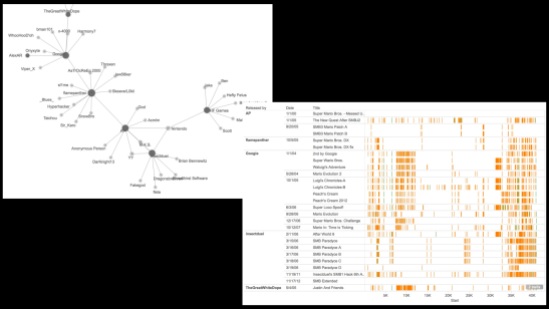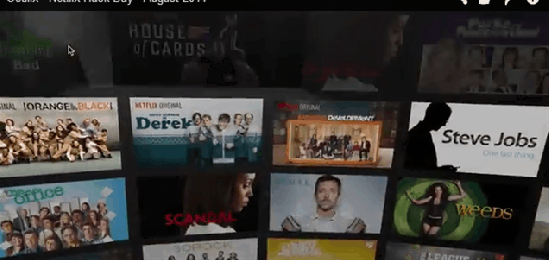Here is the abstract for Shane Denson and Andreas Jahn-Sudmann’s paper on the panel “Digital Seriality” at the 2015 SCMS conference in Montréal:
The Xbox One as Serial Hardware: A Technocultural Approach to the Seriality of Computational Platforms
Shane Denson (Duke University) and Andreas Jahn-Sudmann (Free University Berlin)
In order to fully understand the serial aesthetics and practices of digital game culture, seriality must be addressed not only on the level of software or gameplay, but also as a hardware phenomenon. The (un)official numbering of console generations serves to mark innovations serially (e.g. PlayStation, PS2, PS3, PS4), and this accords generally with the way in which the technical, aesthetic, and economic evolution of game software and hardware follows a serial logic of “one-upmanship” (cf. Jahn-Sudmann and Kelleter 2012). However, some systems like the new Xbox One ostensibly refuse the additive logic of innovation (the would-be “Xbox 720”) and perform a symbolic reboot instead (cf. Denson and Jahn-Sudmann 2013). Yet this revolutionary rhetoric, along with its connotation of exclusivity, seems hardly compatible with the serial remake-logic of game engines, for instance. These engines function not only to allow games to be run on various platforms (PC, consoles, etc.) with only minor changes to their source code, but also serve to make the reusability of core software components easier and faster, thus increasing the economic viability of game series. Already against this backdrop, the technical development of consoles has to be conceptualized, almost inevitably, as a process of media evolution rather than of media revolution.
In our paper, we seek to explore how game consoles like the Xbox One not only enable and constrain aesthetic forms and practices of ludic seriality, but also how these platforms themselves emerge as serial factors of technocultural expression. The presentation focuses particularly on two questions: First, and more generally, how can the theoretical and historical perspective of “platform studies” (as advocated by Montfort and Bogost 2009) contribute to the study of digital seriality? Second, in how far can we think of the game console as a computational platform that mediates different levels of ludic seriality (forms of serialization within the game, between games, and “outside” the game) while also shaping the cultural forms of what we call “collective serialization” (i.e. processes of community-formation in connection with the consumption of serialized media) and “serial interfacing” (i.e. the temporal-serial experiences that transpire at the interface between humans and digital technologies) (Denson and Jahn-Sudmann 2013)?
Bibliography
Denson, Shane, and Andreas Jahn-Sudmann. “Digital Seriality: On the Serial Aesthetics and Practices of Digital Games.” Eludamos: Journal for Computer Game Culture 7.1 (2013): 1-32.
Jahn-Sudmann, Andreas, and Frank Kelleter. “Die Dynamik serieller Überbietung: Amerikanische Fernsehserien und das Konzept des Quality TV.” Populäre Serialität: Narration-Evolution-Distinktion. Zum seriellen Erzählen seit dem 19. Jahrhundert. Ed. Frank Kelleter. Bielefeld: Transcript Verlag, 2012. 205-224.
Montfort, Nick, and Ian Bogost. Racing the Beam. The Atari Video Computer System. Cambridge; London: The MIT Press, 2009.
Author Bios:
Shane Denson is a DAAD postdoctoral fellow at Duke University and a member of the research unit “Popular Seriality—Aesthetics and Practice.” He is the author of Postnaturalism: Frankenstein, Film, and the Anthropotechnical Interface (Transcript 2014) and co-editor of several collections: Transnational Perspectives on Graphic Narratives (Bloomsbury, 2013), Digital Seriality (special issue of Eludamos, forthcoming), and Post-Cinema: Theorizing 21st Century Film (REFRAME, forthcoming).
Andreas Jahn-Sudmann is assistant professor at the John F. Kennedy Institute for North American Studies (Freie Universität Berlin) and a member of the research unit “Popular Seriality—Aesthetics and Practice,” in which he co-directs the project “Digital Seriality.” He is the author of a book on American independent film, Der Widerspenstigen Zähmung? (Transcript, 2006), and co-editor of several anthologies, among them: Computer Games as a Sociocultural Phenomenon (Palgrave, 2008).








